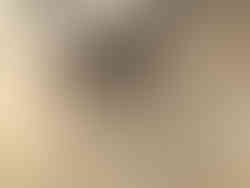133: Dig Update
- IJ
- Aug 10, 2019
- 3 min read
Updated: Jul 13, 2022
Dig 19 was one were '7 mile' continued to be excavated. It was a single day dig, the first single day dig since February, but this time we used more people and we pushed forward specifically to see if the changes in the tube structure observed with the GoPro wheeled drone led to an open tube. If it did much would change very quickly.
I'll be honest. Everything around me; circumstances, feelings, environment, public mood, issues, and so many other seemingly innocuous things, suggested we were close and I can't explain what I mean by that. But I wasn't falling for that emotional trap again. Last time my expectations at the end of 'Waterfall" (the end of the 2nd straight), had me on an extreme high and extreme low all within 15 minutes. You have to understand all the emotions involved in this dig. This is not some random event, this is a serious undertaking, with serious and far reaching consequences for all of us, even the public of NZ and the rest of the world...if we are right.
If we are wrong we've been fools, but explain to us again why someone would hand fill (so far) 21 metres of a 1 metre round phreatic tube when every other one in existence is empty or filled with ceiling dust? Therein lies your answer!
So, what did we do and what did we find?
Well, nothing much. This dig was tough. Most of us had been sick and therefore we were mostly unfit. One couldn't make it due to spinal issues. Four and a half hours was all we could manage but there were six of us, and we need that many now. With two at the head we need two inside just to pull the sleds back and forth to those waiting outside, we moved as much as we could.
There were no bones found, just a small stick from outside (once again proving the fill was not natural), and a small marine snail shell - same proof. Apart from the Little Bush Moa bones and the fossilized human femur, there had been two other bones found in previous digs that were either bones from a stout-footed moa or more likely cattle legs bones. If cattle, then we can determine the tube was filled after the 1920's and not before (cattle were only farmed in the area since then, but more likely 30-40 years ago. Who knows? Unless we find something man-made in the fill, there is nothing to narrow down a time frame.
The tube leading to this cave had bent one way and then another and then another. During the previous dig I was at (I missed the last one) the tube looked like it bent to the left and continued for about 7 metres straight ahead. Instead, they had followed the roofline which suggested otherwise and it lead to a wall; a dead-end if you wish. Either the tube now went down or we needed to dig toward the left wall to find it's natural course. This phreatic tube which once carried massive volumes of rapidly moving water, can't just not have a beginning, also it would not follow a smaller opening or the pressure would show scouring in the oppposite wall and create larger chamber corners; at least that's how I saw it. One clue, after examining the photos afterward, was a tiny bedding line in the roof. I'm 100% sure it proceeds the way it should as I first saw it.
The roof of the tube did indeed change in the direction they had dug though, it was now knobbly instead of smooth and linestone dripping onto soil had created some unusally shaped attachments to the tube wall.
In spite of hitting a side wall dead-end, nothing changes. What we dig out is still 'outside fill' brought by hand into this tube to block it and protect what's inside from ever being revealed again. I have to admire those that did the work and planned the blockage; it is a very complete and very effective deterrant - except from us. The next dig will change dirtection slightly and get back on track.
I want to thank all the team members for all their hard work. We couldn't do this without them!

























































Comments